
Swimming In A Frozen World
In the quiet stillness of a winter landscape, Judy Lehmberg captured a beautiful Barrow’s Goldeneye gliding effortlessly through partially frozen waters. It swims amongst its companions, moving with purpose as its black and white plumage gleams under the soft winter light.
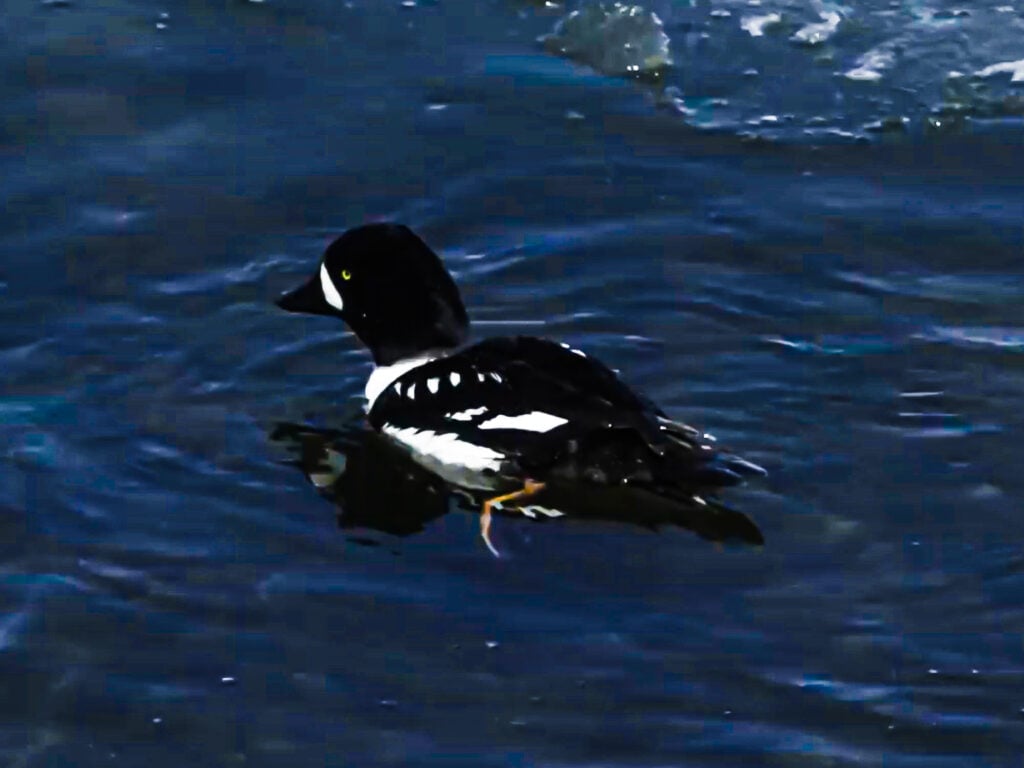
With ease, it dives beneath the surface time after time, foraging for food hidden beneath the cold waters. With practically transparent waters, Judy was able to capture the goldeneye kicking fiercely along the bed before resurfacing, displaying resilience in the landscape’s harshest season.
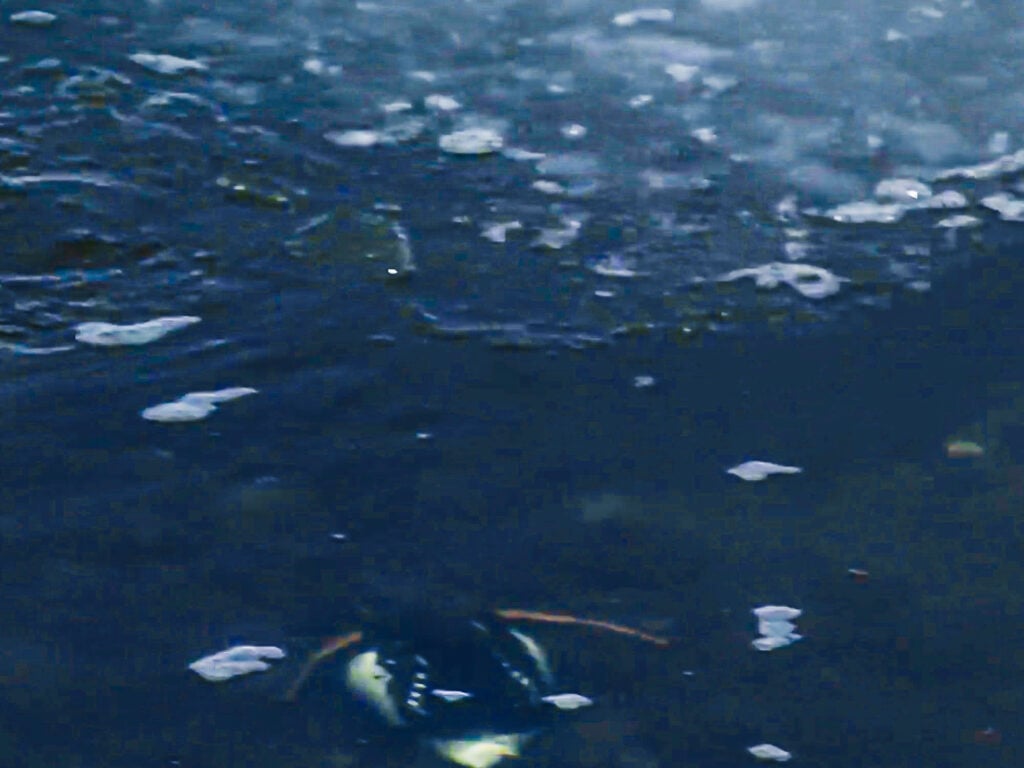
While Judy focuses on one individual, Barrow’s goldeneyes are social birds. In winter, they often gather in loose flocks, especially around ice-free water.
These gatherings offer safety in numbers and play a role in the bonding of pairs ahead of spring. The presence of other goldeneyes in the background hints at a larger community, quietly surviving winter together.

Diving For Dinner
Unlike mallards that search the water’s surface for food, goldeneyes are diving ducks. They shoot beneath the surface to retrieve a meal that typically consists of aquatic insects, crustaceans, molluscs, and small fish.
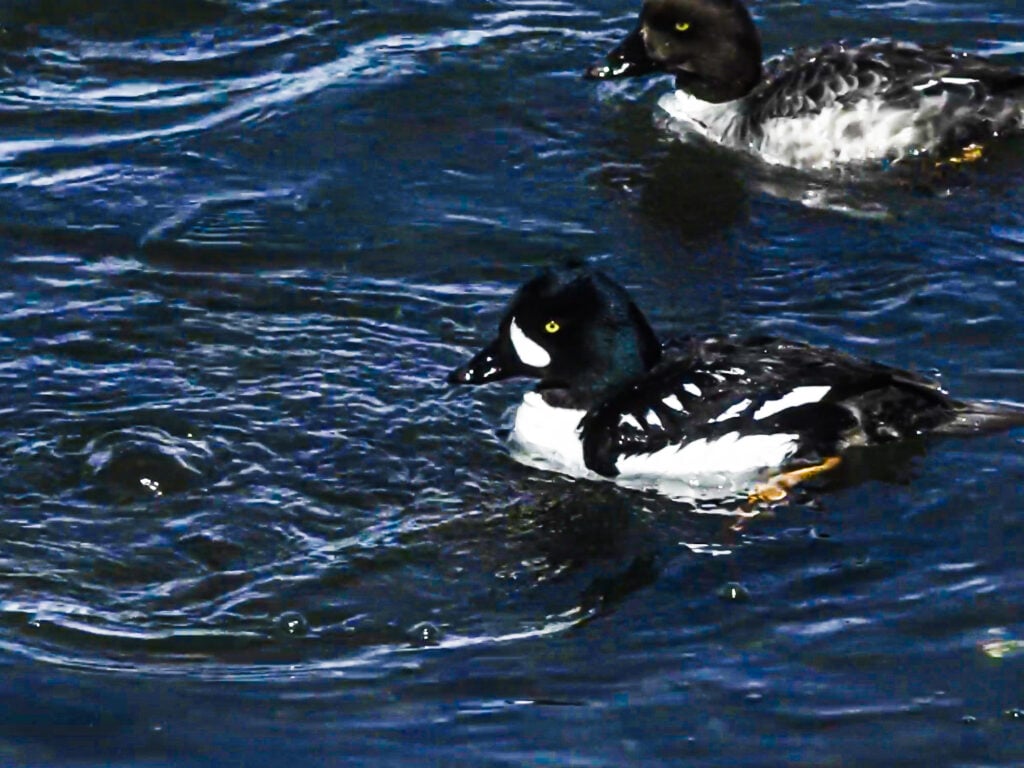
As displayed by the individual in Judy’s footage, goldeneyes will skillfully retrieve their meals from underwater rocks and vegetation using their bills. They are silent but efficient hunters, thriving on the bounties offered in their natural environment.
Their compact, streamlined bodies and strong legs make them exceptional swimmers, propelling them quickly through the water. Even in near-freezing conditions, they show no hesitation, diving repeatedly with purpose and precision.
What Makes Goldeneye So Cold-Hardy?
Barrow’s Goldeneyes are native to western North America and parts of Iceland. They breed near freshwater lakes but overwinter in coastal bays, rivers, and unfrozen inland lakes.
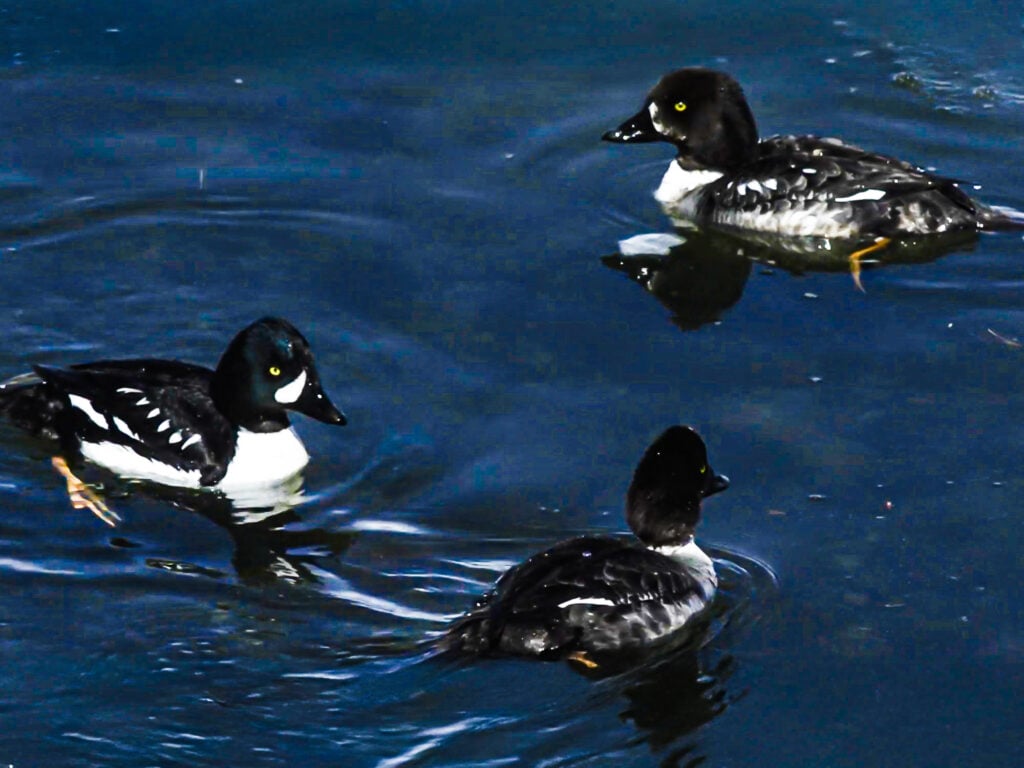
Inhabiting northern landscapes forces goldeneyes to perfectly adapt to life in cold climates. Their thick layers of down and waterproof outer feathers insulate their bodies and work well against icy temperatures.
Additionally, specialized blood circulation in their legs and feet, called countercurrent heat exchange, helps them conserve their warmth while swimming in near-freezing temperatures. These physiological adaptations allow goldeneyes to remain active and thrive in the northern habitats that send many other birds flying south.
Get our Best Sightings as they Come in
A Glimpse into a Lesser-Known Duck Species
Though not as famous as mallards or teals, Barrow’s goldeneyes are a fascinating and unique species. Males are instantly recognizable by their steep forehead and crescent-shaped white face patch, while females are more subdued in colour, but equally striking in their sharp, agile movements and confident dives.
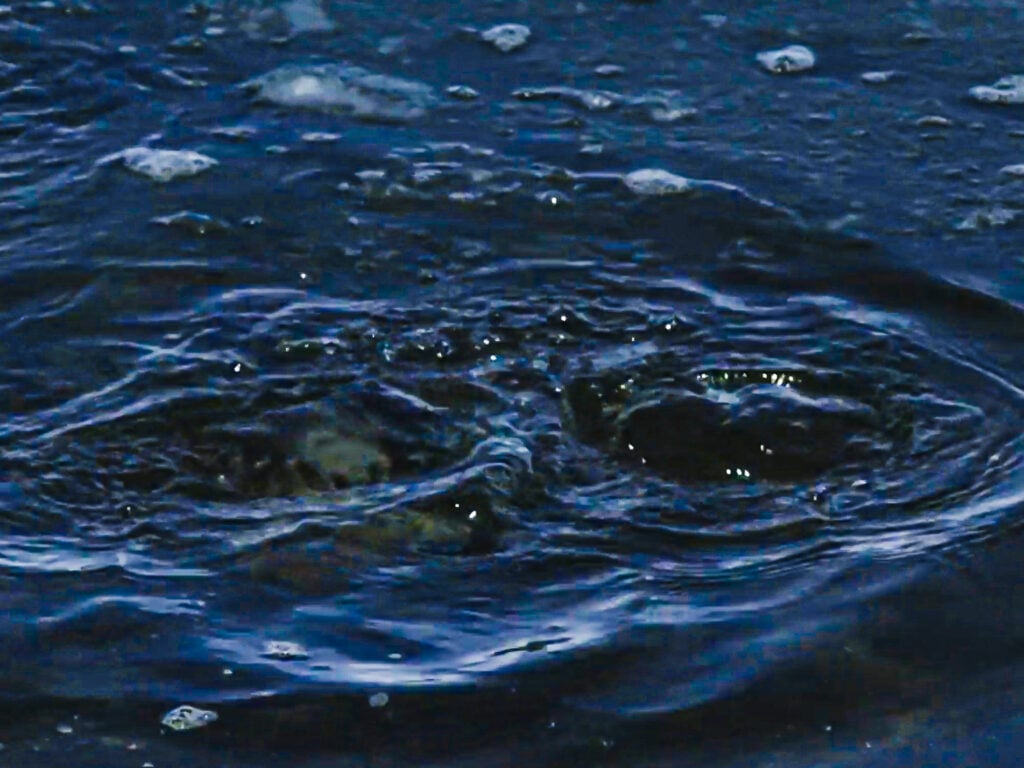
These ducks are named after Sir John Barrow, the 19th-century British statesman and Arctic explorer, whose legacy is fittingly honoured by a duck so well-equipped for the cold! Their preference for icy, fast-moving waters and remote northern breeding grounds makes them a thrilling find for any wildlife enthusiast or birder.
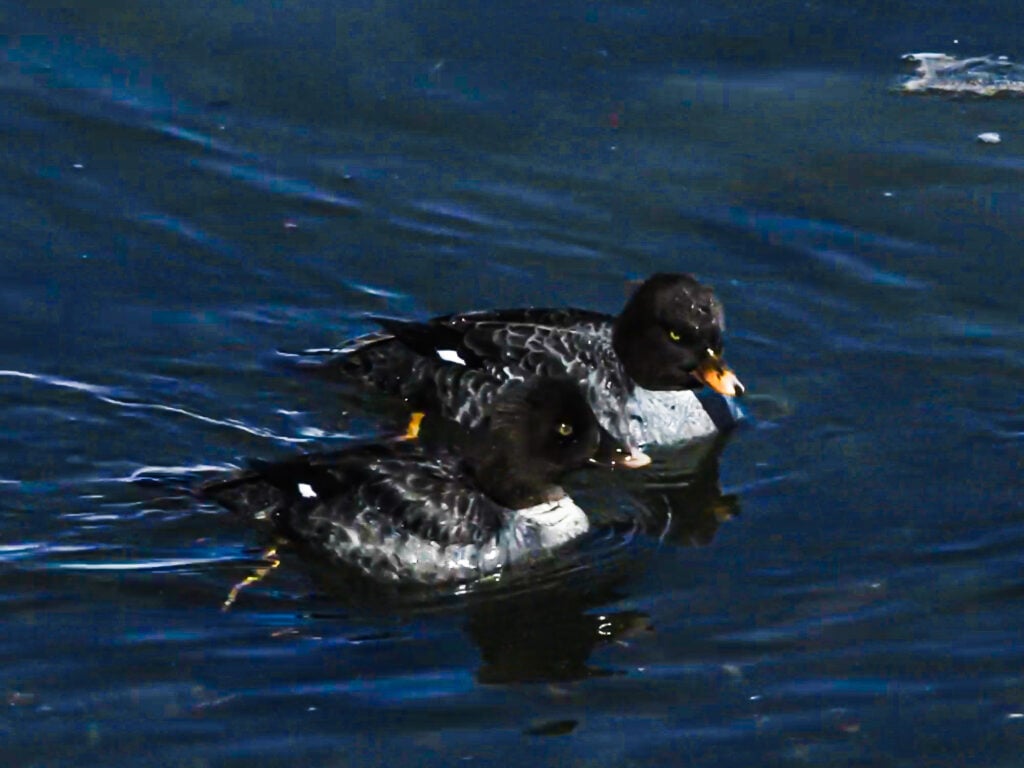
Judy’s footage offers more than just a look at a bird swimming through icy water, it’s a quiet meditation on survival, adaptability, and elegance in the wild. As the goldeneye dives again into the cold depths, it reminds us that even the smallest creatures possess astonishing strength when nature demands it.
